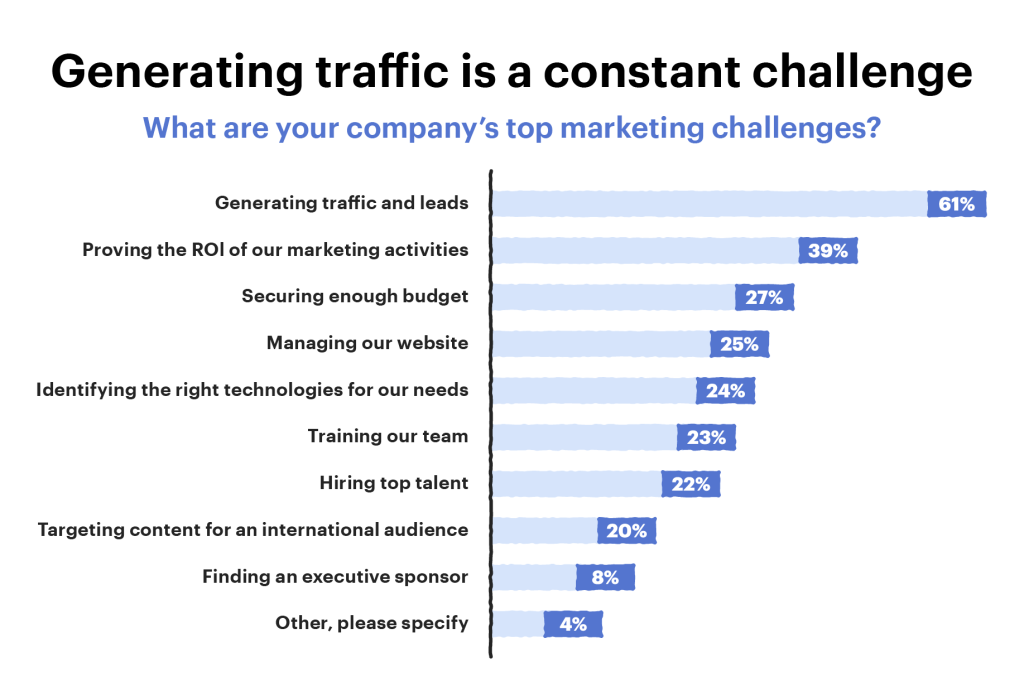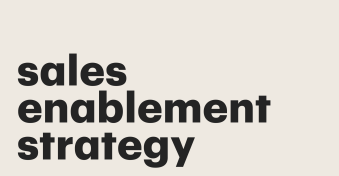There’s no getting away from the fact that in today’s dynamic landscape of sales and marketing, distinguishing between prospects vs leads is crucial for optimizing conversion strategies.
This article delves into the definitions of leads vs prospects, highlighting key differences that often determine the success of a sales funnel.
We’ll also look at actionable insights on how businesses can swiftly upgrade leads to prospects, accelerating the progression toward valuable opportunities and boosting overall sales efficiency.
Most importantly, you’ll find out how leads vs prospects require equal input and when you need to push one aside to focus on the other.
It’s not so much about sales prospecting vs lead generation as knowing how and when to prioritize one or the other.
Key takeaways
- Leads are people or businesses, that may be interested in your service that your salespeople can convert. Lead generation suits businesses looking to broaden their outreach and find new customers.
- A prospect is a potential customer identified as fitting specific criteria and exhibiting a higher likelihood of making a purchase.
- Sales prospecting is suitable for businesses that already have a lot of leads and are looking to move them down the sales funnel. A sales opportunity is a potential business deal or the chance to generate revenue by selling a product or service.
- Differentiating between leads, prospects, and opportunities optimizes resource allocation, improves targeting, increases conversion rates, and enhances overall sales effectiveness and efficiency.
What is a lead?
What are leads? Leads are people or businesses that may potentially be interested in your service that your salespeople can then convert.
Therefore, lead generation is finding these people that could be your ideal customer – and then capturing their data.
There are different ways you can do this. Some sales reps choose to gather leads from business directories manually. Others purchase databases.
You could have a go at improving your SEO rankings to try to increase inbound traffic and generate leads that way.
Businesses – especially those involved in B2B sales – do this to find new prospects and customers to drive down the sales funnel.
Leads come at the earliest of all the sales funnel stages. They might not have demonstrated an interest in your product or service yet, but from first contact, there are signs that they need a product like yours.
For example, your ideal customer profile may be a business looking for the best task management software. Although a prospect customer may not have directly expressed an interest in your business specifically, you know they are in the market for a product like yours.
Targeting your marketing efforts towards this group gives you a much better chance of generating quality sales leads and conversion.
Benefits of a lead generation strategy
Lead generation is great for businesses and sales organizations looking to find new customers and close deals more effectively. It doesn’t matter whether you operate in a B2B or B2C market.
There are several benefits when it comes to using a lead generation strategy, making it a good strategy for any business.
The benefits of lead generation include:
- Low-risk strategy given the small costs involved
- Find new customers and increase sales
- Find prospects to continue marketing to
- Gain insight into your target market segments
Problems with lead generation
It sounds easy, right? You know your customers – just go out and find some more. But why did nearly two-thirds of marketers list lead generation as a constant challenge?

It’s because a lead generation strategy is complicated! You need to commit to your strategy, and somebody has to be responsible for managing the process.
You can outsource lead generation if it’s not something you have the resources for in-house. Although this can be costly, many businesses see a significant return on investment (ROI).
Leads are invaluable as they have already entered the sales funnel.
Bringing lead generation in-house isn’t all bad. It helps to keep costs low. Your team will find it time-consuming, but strong teamwork and collaboration will stop people from feeling burnt out.
Often, in-house lead generation strategies are highly effective.
Your sales team knows what type of people are interested in your product or service and has in-depth knowledge of the sales process. They have a better idea of your target audience than anyone in your company.
That means they know which leads to capture and what data to collect.
When should you use a lead generation strategy?
Every day? Once a week? Never? What do you think?
When you launch a business, lead generation is almost all you do. Building databases, asking friends and family, and creating social media accounts.
Marketing is a form of lead gen. You might choose to update your content marketing strategy to capture more leads.
As a general rule of thumb, you should never stop lead-generating. However, as your business grows, you won’t need to invest much time and money into your strategy.
A good content marketing strategy can improve your search engine rankings and bring you leads organically.
Email marketing is the most effective tactic for growth, with only 18% of business professionals stating it is the most difficult.
But every business is different. What suits you might not suit your neighbor, which is why many small businesses initially trial different tactics.
So, you’ve started generating leads and built up a healthy-looking database of potential future customers. Now, it is time to move on to sales prospecting.
What is a prospect?
Ok, got it. But what are prospects? A sales prospect is a potential customer identified as fitting specific criteria and exhibiting a higher likelihood of making a purchase.
Sales prospecting encompasses everything your sales representatives go through before they close a deal, from cold calling (although a truly cold call shouldn’t occur if you’ve got lead gen right) through follow-up, all the way to (hopefully) the ultimate purchase decision.
During the sales prospecting process, you already know that an individual is interested in your product or service (they’re a lead). The question is, how will you get them to choose you?
Depending on the nature of your business, this process may take some time. An individual might only take a few seconds to decide which brand of beans to buy, but it could take months before purchasing a house.
Within your sales prospecting process, there are three things that you have to manage.
These are qualifying, meeting, and closing.
1. Qualifying
First of all, you want to qualify your lead.
This process is as simple as asking questions and gathering business intelligence. It helps you better understand where that lead is in the sales funnel and is vital to effective prospecting.
Think of a trade show. When you are approached by a sales representative, they ask you particular questions.
These questions have been designed to qualify you. Are you at that event because you are genuinely interested in the products on offer? Do you have buying power as a decision-maker, or are you an influencer?
The correct answers to your questions take a potential buyer to the point of being a qualified lead. As part of the sales process, qualifying leads don’t always get the credit they deserve. It’s an essential aspect of effective sales and generating new business.
2. Meeting
Meeting your potential prospect can help solidify relationships and help with the decision-making process. Given the current restrictions, you may host a chat, video, or conference call.
This is an essential step in sales prospecting – particularly for high-value or high-risk products or services.
There are different approaches you can take to meet your sales prospects. Having already qualified them to be potential customers, you may choose to go straight in with selling your product or service.
On the other hand, you may find it beneficial to spend time nurturing the relationship before you tell them about your business.
This way, you can tailor your sales pitch to suit them by telling them exactly how you can solve their problems or alleviate their pain points.
3. Closing
Closing the deal is more than just reaching the end of the sales pipeline and getting your prospect’s name on the dotted line.
It’s about knowing how to welcome new customers and deliver an excellent customer experience. The entire sales prospecting process has led you to this moment.
Only by qualifying and meeting your prospect can you tailor your offering to suit their needs. You’ll know how much help they might need going forward.
Or if they just want to be left alone. Either way, you’ll have this information to deliver the customer experience they want and need.
Benefits of a sales prospecting process
If you have a sales team, you can easily improve your sales prospecting strategy.
That is one of the main benefits. A little bit of training can go a long way, and most businesses already have the resources in-house.
However, almost half of sales pros say that prospecting is the hardest part of their job. More complex than gathering contact information on new leads for sales or even upselling to existing paying customers.
Why? Time management.
Sales representatives speak to people at different stages of the sales funnel. Whether by emailing them, making outbound calls, or arranging face-to-face meetings with potential buyers.
Keeping on top of this is tricky. It’s easy to forget a meeting or lose an email thread.
That’s why using good project scheduling software and keeping many notes is essential! As well as using CRM and other solutions that make data easily accessible to everyone involved.
Fortunately, there are things you can do to improve your team’s productivity and keep everyone involved in sales prospecting motivated.
Start with good communication; it might be necessary to hand over prospects if somebody is particularly busy.
Training can help as well. The quicker you qualify a lead, the quicker the prospecting process.
It sounds like a lot of work, but implementing robust sales prospecting techniques can benefit your business in more ways than one. You’ll build an army of loyal, happy customers by nailing this process.
These customers will share their great experiences with their friends and families, giving you a great source of referrals.
What is a sales opportunity?
We can’t talk about prospects or leads without tackling sales opportunities. A sales opportunity is a potential business deal or the chance to generate revenue by selling a product or service. It comes when a prospect or lead shows interest and is likely to purchase.
Sales professionals pursue and manage opportunities to convert leads into actual customers and achieve revenue growth.
What are the stages of a sales opportunity?
There are various stages to each sales opportunity, but they generally include the following:
Prospecting and qualification
Identify potential leads and assess their suitability as customers based on criteria such as needs, budget, and decision-making authority.
Needs analysis and discovery
Engage with qualified leads to understand their specific requirements, challenges, and goals, tailoring the sales approach to address their needs.
Presentation and proposal
Present a solution or product that aligns with the prospect’s needs, providing a detailed proposal that outlines features, benefits, and pricing.
Negotiation and objection handling
Address concerns, negotiate terms, and overcome objections to move the prospect toward a positive decision.
Closing the sale
Secure commitment from the prospect to proceed with the purchase, finalize terms, and close the deal.
Follow-up and post-sale relationship building
Maintain communication after the sale, ensuring customer satisfaction, addressing any post-purchase issues, and building a long-term relationship.
Upselling and cross-selling
Identify opportunities to offer additional products or services to existing customers, maximizing revenue and fostering ongoing business relationships.
What are the characteristics of a sales opportunity?
Sales opportunities can be spotted by their common characteristics:
Qualified prospect
The opportunity involves a prospect who has been assessed and deemed likely to purchase based on predefined criteria.
Identified need
There is a clear understanding of the prospect’s needs, challenges, or pain points that the salesperson can address with a product or service.
Decision-making potential
The prospect possesses the authority or influence to make decisions regarding the purchase.
Timeline for decision
There is a timeframe within which the prospect intends to make a buying decision, providing a sense of urgency.
Budget alignment
The prospect has a budget or financial resources available to make the purchase, ensuring feasibility for both parties.
Communication and engagement
There is active communication and engagement between the salesperson and the prospect, indicating mutual interest in exploring the opportunity.
Competitive landscape
Awareness of competitors and understanding how the offered solution compares to the prospect’s decision-making process.
Clear next steps
The sales opportunity has defined the next steps, whether it’s a product demonstration, proposal presentation, or negotiation, guiding the progression of the sales process.
Alignment with business goals
The opportunity aligns with the prospect’s and selling organization’s strategic objectives and goals.
Potential for upselling
There may be opportunities for upselling or cross-selling additional products or services beyond the initial sale.
What is the difference between lead and prospect?
The difference between a lead and a prospect is that a lead is a potential customer with minimal qualifications, while a prospect is a lead that has been further assessed and identified as having a higher likelihood of becoming a customer based on specific criteria.
Now that you know what lead generation and sales prospecting are, it’s time to think about your business’s aims and objectives.
Look ahead to the future with 7 essential free mobile apps for small businesses.
The truth is that you probably want to implement a lead generation strategy and a sales prospecting strategy. The two work in sync. However, as you progress and improve your tactics, you’ll find everything getting faster, easier, and more effective.
Lead generation suits businesses looking to broaden their outreach and find new customers. Your marketing team might try affiliate marketing or finding new leads on LinkedIn.
Sales prospecting is good for businesses that already have a lot of leads and are looking to move them down the sales funnel.
These sales leads could have come through your website or social media platforms, or you might have had a successful lead-generation strategy. These two go hand in hand.

The diagram shows lead generation and sales prospecting to be the same size, suggesting they are equally significant.
That is true. Without lead generation, you will have no leads to prospect. Without sales prospecting, you will rarely close a deal.
But just because they are both significant doesn’t mean you must do it all at once.
Think back to the sales funnel. Lead generation starts the process, sales prospecting finishes it. Or does it?
Lead vs opportunity: how do they differ?
A lead is a potential customer who has shown interest in a product or service but may not be fully qualified. Leads are often at an early sales funnel stage, requiring further qualification.
A sales opportunity is a qualified prospect with a higher likelihood of making a purchase. Opportunities typically involve engaged prospects with identified needs and potential for a sales conversion.
The transition from a lead to an opportunity signifies a progression in the sales process, indicating a higher level of interest and qualification.
How to convert prospects to opportunities
Converting prospects into opportunities follows quite a similar process but involves strategically guiding potential customers through the sales process. Here are steps to simplify the transition:
Understand prospect needs
Deepen your understanding of the prospect’s needs, challenges, and goals. Base your approach on this knowledge to demonstrate how your product or service addresses their specific requirements.
Provide customized solutions
Offer customized solutions to the prospect that showcase the value of your offerings. Remember to clearly articulate how your product or service meets the prospect’s unique needs, emphasizing the benefits they will gain.
Effective communication
It is crucial to maintain clear and effective communication. Be responsive to inquiries, provide timely and accurate information, and address any concerns promptly to build trust and confidence.
Build rapport and relationships
Building rapport and establishing a personal connection can strengthen a relationship. And a positive relationship can influence the prospect’s decision-making and increase the likelihood of conversion.
Demonstrate expertise
Don’t forget to demonstrate your expertise in your industry or domain. Never underestimate the impact of sharing relevant insights, case studies, or success stories that showcase your knowledge and the positive outcomes your offerings can deliver.
Propose next steps
Propose specific next steps in the sales process, such as a product demonstration, trial period, or detailed consultation. Clearly outline how these steps contribute to solving the prospect’s challenges and achieving their goals.
Address objections
Reassure your prospect by proactively addressing any objections or concerns they may have. Provide additional information or clarification to alleviate doubts and create a positive buying experience.
Highlight unique selling points
Emphasize the unique selling points of your product or service to your prospect. Clearly communicating what sets you apart from competitors will reap rewards, as will letting them see how choosing your solution will benefit them.
Utilize social proof
This is gold. Share testimonials, reviews, or references from satisfied customers to provide social proof of your product’s effectiveness and customer satisfaction.
Follow up systematically
Stay engaged with the prospect by implementing a systematic follow-up process. Regular follow-ups demonstrate your commitment and interest in their business, and they can help move the prospect closer to a decision.
Use CRM tools
As in the previous section, leverage Customer Relationship Management (CRM) tools to track interactions, set follow-up reminders, and manage prospect information efficiently.
Negotiate and finalize terms
Once the prospect is sufficiently interested, initiate negotiations and work towards finalizing the deal terms. Always try to be flexible and willing to accommodate reasonable requests.
The benefits of differentiating between leads vs. prospects vs. opportunities
Differentiating between leads, prospects, and opportunities optimizes resource allocation, improves targeting, increases conversion rates, and enhances overall sales effectiveness and efficiency.
1. Efficient resource allocation
By accurately categorizing leads, prospects, and opportunities, sales teams can allocate resources more efficiently. This ensures that valuable time and effort are concentrated on high-potential prospects and opportunities rather than dispersed across a broad range of leads.
2. Targeted marketing and messaging
Understanding where a potential customer stands in the sales funnel allows for more targeted marketing and messaging. Leads may require general awareness, prospects benefit from tailored information addressing their needs, and opportunities can be presented with detailed proposals and specific value propositions.
3. Improved conversion rates
Clear differentiation enables sales teams to tailor their approach at each stage, leading to higher conversion rates. Providing relevant information and engaging prospects and opportunities appropriately increases the likelihood of successfully moving them through the sales funnel and closing deals.
4. Enhanced customer relationship management
Proper categorization facilitates better customer relationship management. It allows for personalized interactions, timely follow-ups, and a deeper understanding of each contact’s journey, fostering stronger relationships with potential customers.
5. Strategic decision-making
Having distinct categories informs strategic decision-making. Sales managers can analyze the performance of leads, prospects, and opportunities separately, identifying areas for improvement and adjusting strategies based on the unique characteristics of each stage.
6. Optimized sales funnel management
A clear differentiation between leads, prospects, and opportunities aids in the effective management of the sales funnel. Sales teams can monitor progression, identify bottlenecks, and implement targeted interventions to streamline the entire sales process.
7. Resource prioritization
Understanding the differences allows for prioritizing resources based on the potential value of each category. This ensures that the sales team focuses on activities with the greatest impact on revenue generation and business growth.
8. Improved forecasting
Accurate categorization provides better insights for sales forecasting. By tracking the movement of leads through the funnel, sales teams can make more informed predictions about future revenue, enabling better business planning.
9. Reduced sales cycle time
Targeted efforts and personalized engagement at each stage can lead to a more streamlined and efficient sales cycle. Understanding where a contact stands in the buying process allows sales professionals to address specific needs and move the process forward more effectively.
10. Enhanced customer experience
Tailoring interactions based on the customer’s journey improves the overall experience. It demonstrates responsiveness and a keen understanding of the customer’s needs, contributing to a positive and personalized engagement throughout the sales process.
Prospecting vs lead generation: 5 ways to tell which you should focus on
Here are five ways to tell whether you should focus more on lead generation or sales prospecting.
Firstly, you must ask yourself five questions:
1. How many leads do you have?
If you have a long list of leads but few new customers, it’s time to focus more on your sales prospecting efforts. Have your team members work through the list of leads until each one has either been qualified or disregarded.
This is an excellent way of adding an element of gamification to your business model.
2. What are your business goals?
Do you want to see sales soar this year? Or are you happy with your rate of growth? Getting sales prospecting right is essential if your goal is to increase sales. Therefore, you may focus more on this process.
3. How busy is your sales team?
If they’re already handling a lot and are snowed under with meetings and phone calls, you may want to put more time into lead generation. That way, your sales team can catch up and are more likely to convert the prospects they are working with.
Use a shared calendar to monitor everyone’s workload and understand when you need to focus on a different strategy.
4. What are your competitors doing?
In most markets, you use competitor analysis to understand what to do. This time, do the opposite. If your competitors close deals daily, they probably aren’t focussing on lead generation.
This gives you an excellent opportunity to get to new leads first.
5. What are your upcoming marketing plans?
A good marketing strategy will bring leads to you, so you need a team ready to go through the sales prospecting process.
Too much lead generation is impractical, as your team can only handle so much at a time.
Take a look at what campaigns are rolling out and decide whether or not you still need to work on lead generation or if you need to dust off some more prospecting methods.
Manage leads and prospects with the right software
Every business is different, so there is no definitive answer regarding lead generation vs prospecting. Ideally, you would focus on both strategies.
But as that isn’t a realistic target, answering the five questions above is an excellent place to start.
In a perfect world, you would implement a lead-generation strategy that requires minimal input.
With leads falling on your lap organically, you can build and develop your industry’s most robust sales prospecting process.
PandaDoc’s reliable software platform can make managing leads, prospects, and opportunities as easy as pie. Try our all-in-one tool to create, collaborate, and design documents.
Request a demo now or sign up for a free 14-day trial.
Disclaimer
PandDoc is not a law firm, or a substitute for an attorney or law firm. This page is not intended to and does not provide legal advice. Should you have legal questions on the validity of e-signatures or digital signatures and the enforceability thereof, please consult with an attorney or law firm. Use of PandaDocs services are governed by our Terms of Use and Privacy Policy.
Originally published June 21, 2021, updated January 31, 2024


